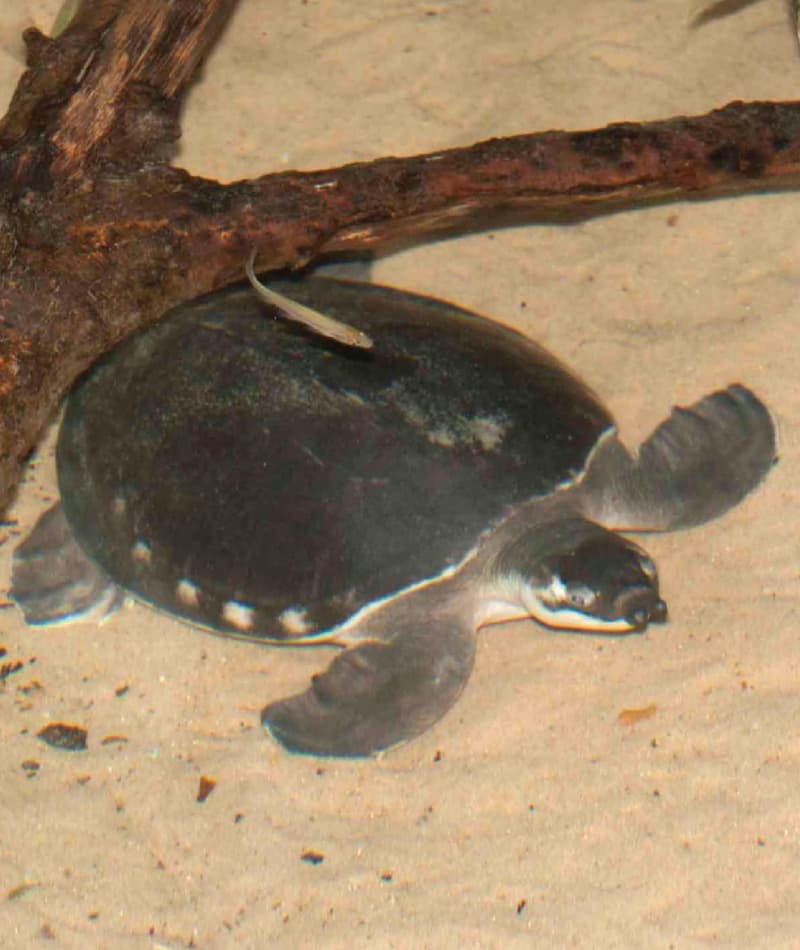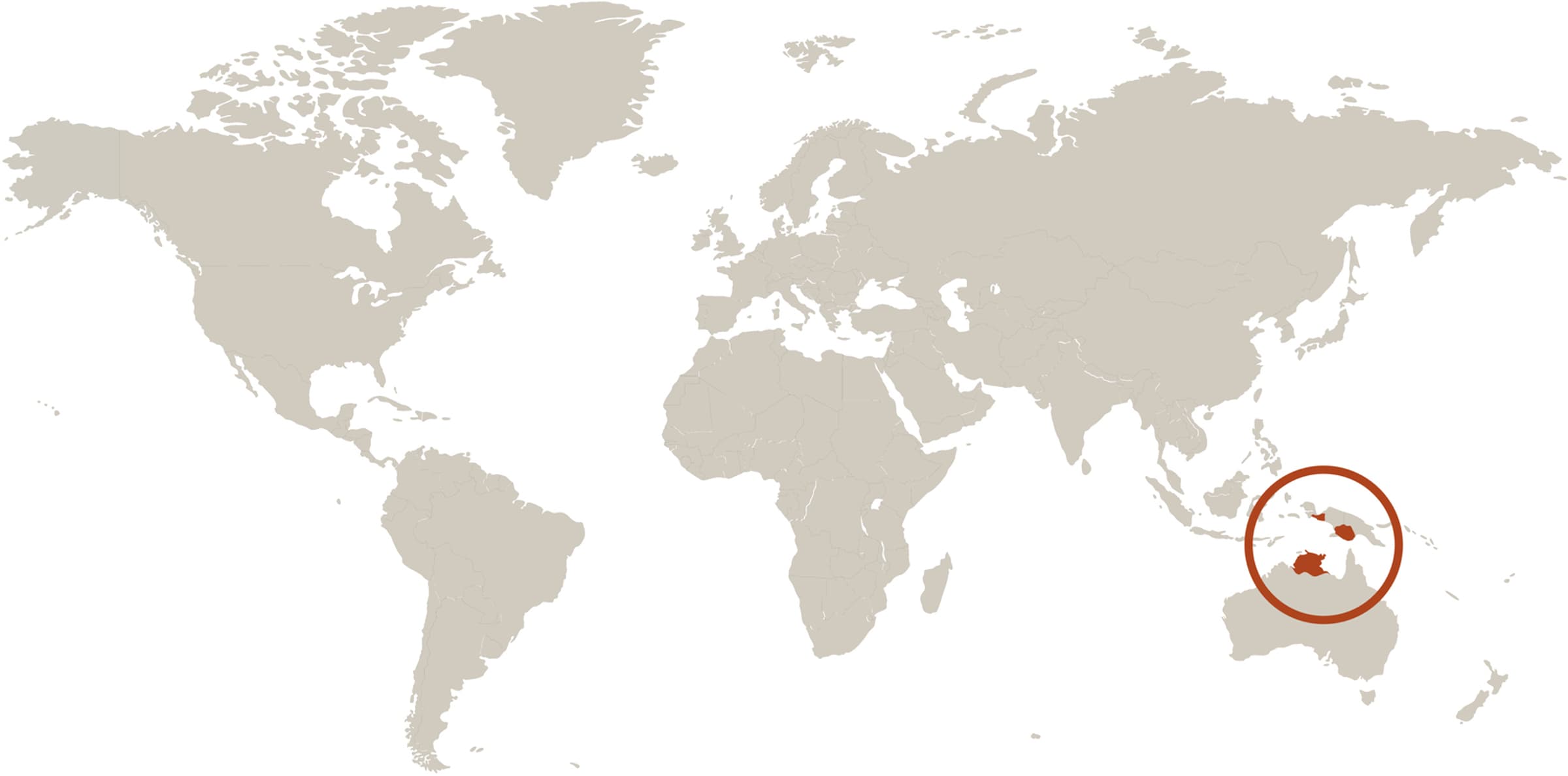
Pig-nosed Turtle
Carettochelys insculpta
Dig you know?
- The last living member of the Carettochelyidae family of turtles
- This turtle is sometimes known as the Fly River turtle, named after one body of water in New Guinea where it's commonly found.
- Although the turtle's upper shell is covered by a layer of skin, it is not a softshell turtle.
- They can grow up to 27.5 inches long and weigh over 60 pounds.
- Although they are omnivores, they mostly eat plants.
One of a Kind
One look at its fleshy snout and big nostrils, and you can see where the pig-nosed turtle got its name. But this freshwater turtle has another unique body features. Its front limbs have undersized claws and are shaped like paddles – much like those of sea turtles!
Fly River Turtle
The pig-nosed turtle is sometimes known as the fly river turtle, named after one body of water in New Guinea where it is commonly found.
Threat Level
- Unknown
- Common
- Near Threatened
- Threatened
- Endangered
- Critically Endangered
- Extinct in the Wild
Threatened
The Pig-nosed Turtle faces a high risk of extinction in the wild.
Range
Northern Australia, southern Papua New Guinea
Habitat
Rivers, streams, lakes, lagoons

We care about pig-nosed turtles
The Saint Louis Zoo supports pig-nosed turtles at the Charles H. Hoessle Herpetarium. Learn more about how we are helping wildlife around the world.
Find this animal in Historic Hill

SAINT LOUIS ZOO ZONE
Historic Hill
Historic Hill is a lovely stroll through one of the oldest parts of the Saint Louis Zoo. From the 1904 World’s Fair Flight Cage to the Spanish architectural flavor of the 1920s in the Bird House, Primate House and Herpetarium to the finishing touches of our thoroughly modern exhibits, this area of the Zoo has a unique ambiance and a nostalgic history that make it a great destination.

